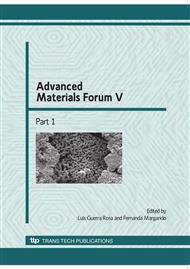p.504
p.511
p.517
p.523
p.531
p.538
p.544
p.550
p.556
Composition and Microstructures of Imperial Brass Chinese Coins
Abstract:
Twenty brass Chinese cash coins with complex compositions were studied for a better understanding of the metallurgical cash production in China, during the 17th, 18th and 19th centuries. Elemental composition was obtained through energy-dispersive micro X-ray fluorescence spectrometry of small cleaned areas on the coins rims. Results showed that these brass alloys (Cu-Zn) frequently contain up to 3% Sn, have highly variable Pb content (from n.d. up to 14%) and Fe, Sb, and As as minor elements. Microstructures were assessed by optical microscopy, scanning electron microscopy with energy dispersive spectroscopy, and preliminary micro X-ray diffraction analysis. All the coins present typical as-cast microstructures although very fine-grained, which are supported by binary (Cu-Zn) and ternary (Cu-Zn-Sn) equilibrium phase diagrams, that explain microstructural differences due to the presence of Sn in these brasses.
Info:
Periodical:
Pages:
531-537
Citation:
Online since:
January 2010
Price:
Сopyright:
© 2010 Trans Tech Publications Ltd. All Rights Reserved
Share:
Citation:


